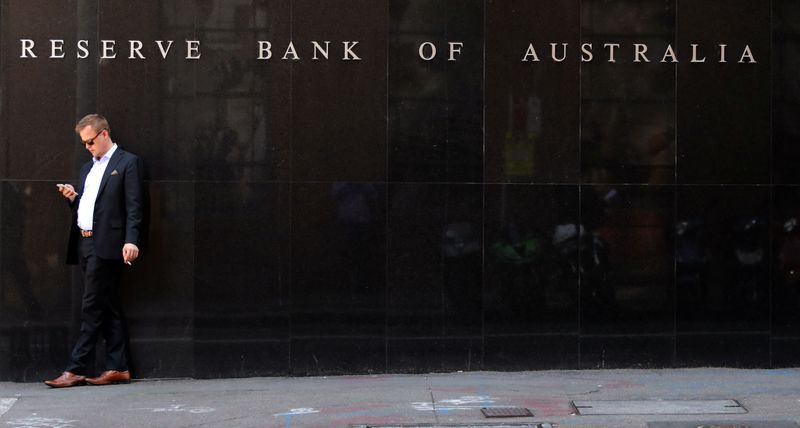
A man smokes next to the Reserve Bank of Australia headquarters in central Sydney, Australia February 6, 2018. REUTERS/Daniel Munoz
February 5, 2020
By Swati Pandey
SYDNEY (Reuters) – Australia’s central bank would see a stronger case for cutting its benchmark interest rate from record lows if the unemployment rate moved higher and there was no progress in lifting inflation, Governor Philip Lowe said on Wednesday.
The unemployment rate eased to 5.1% in December while the latest data showed inflation had ticked higher, implying there was no urgency to lower rates.
Indeed, the Reserve Bank of Australia (RBA) left its cash rate at 0.75% at its first meeting of the year on Tuesday after three cuts last year. It also sounded doggedly upbeat about the economic outlook despite devastating bushfires at home and a viral epidemic in China.
In a speech in Sydney, Lowe said Tuesday’s decision reflected a “judgement about the benefits from a further reduction in interest rates against some of the costs and risks associated with very low interest rates.”
On the one hand, Lowe said further easing would help indebted households, in turn supporting private consumption. It would also lower the local dollar, boosting demand for exports and supporting jobs.
On the flip side, very low interest rates could pump up asset prices, dent consumer confidence and encourage more borrowing by households eager to buy residential property.
Lowe said the board is “continually” looking at both sides of the equation.
“If the unemployment rate were to be trending in the wrong direction and there was no further progress being made toward the inflation target, the balance of arguments would change,” he said.
“In those circumstances, the Board would see a stronger case for further monetary easing,” Lowe added.
“We will continue to monitor developments carefully, including in the labor market, as we seek to strike the right balance in the interests of the community as a whole.”
Financial markets are fully pricing in a cut to 0.50% in June and a 50-50 chance of another easing later in the year, having pushed back expectations after the RBA’s Tuesday rate review. <0#YIB:>
The RBA will release its updated quarterly economic outlook on Friday when Lowe and other senior RBA officials will be grilled by lawmakers in parliament.
In putting together the forecasts, the RBA examined the effects of the devastating bushfires and the drought, Lowe said.
The Bank estimates the fires will shave around 0.2 percentage points off gross domestic product growth across the December 2019 and March 2020 quarters.
However, he expected a pickup from rebuilding so that growth for 2020 as a whole would be little affected.
A further decline of around 10% in farm output is expected this year, representing a drag on GDP growth of around a quarter of a percentage point.
“This is a stark reminder that the economic effects of these climate events are material,” he said.
A new uncertainty hurting the outlook was the outbreak of the coronavirus, although it was too early to gauge the overall impact yet, Lowe said.
For now, the RBA kept its forecasts for GDP growth intact, predicting an expansion of 2.75% over this year and 3% next year.
(Reporting by Swati Pandey and Wayne Cole; Editing by Sam Holmes)

